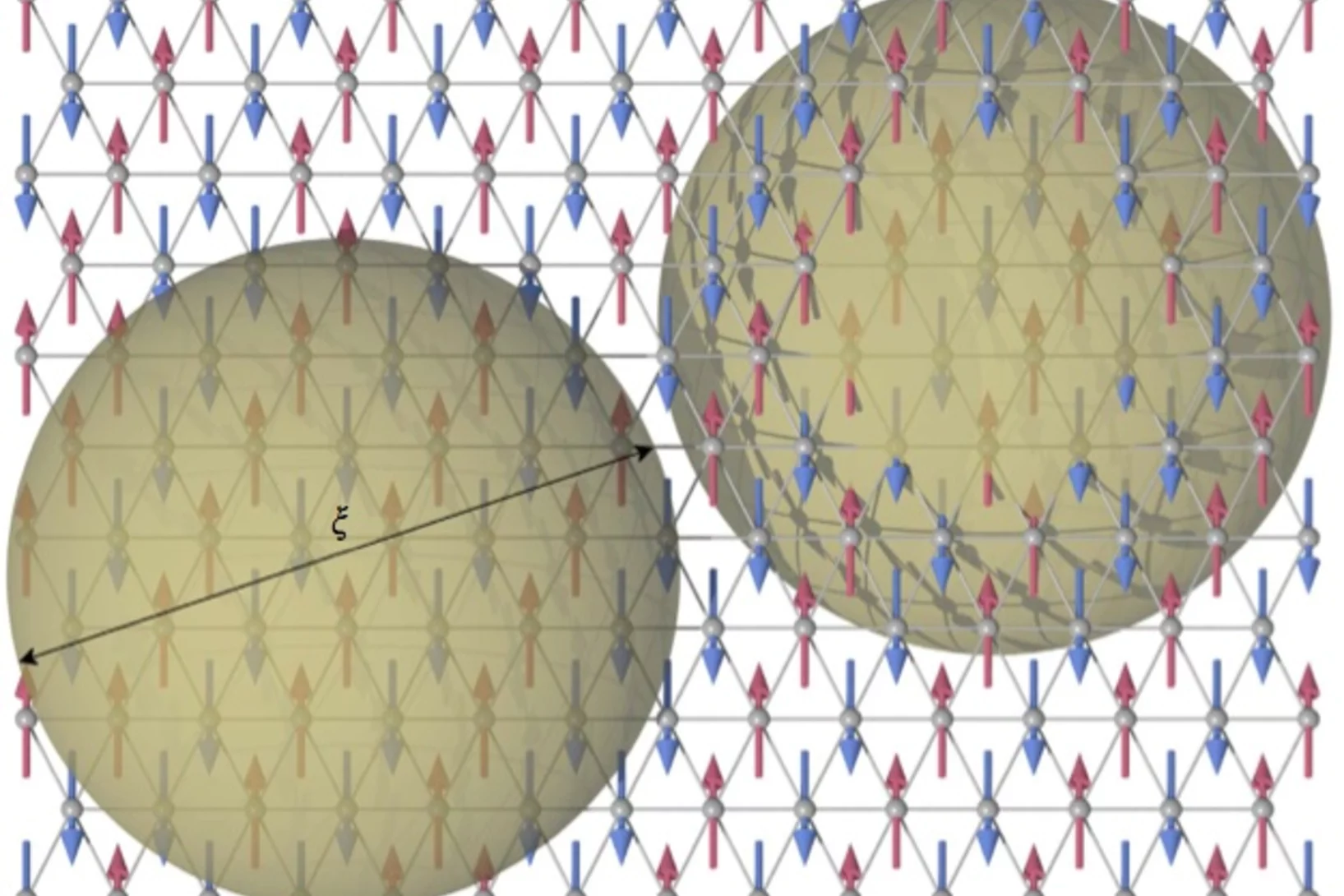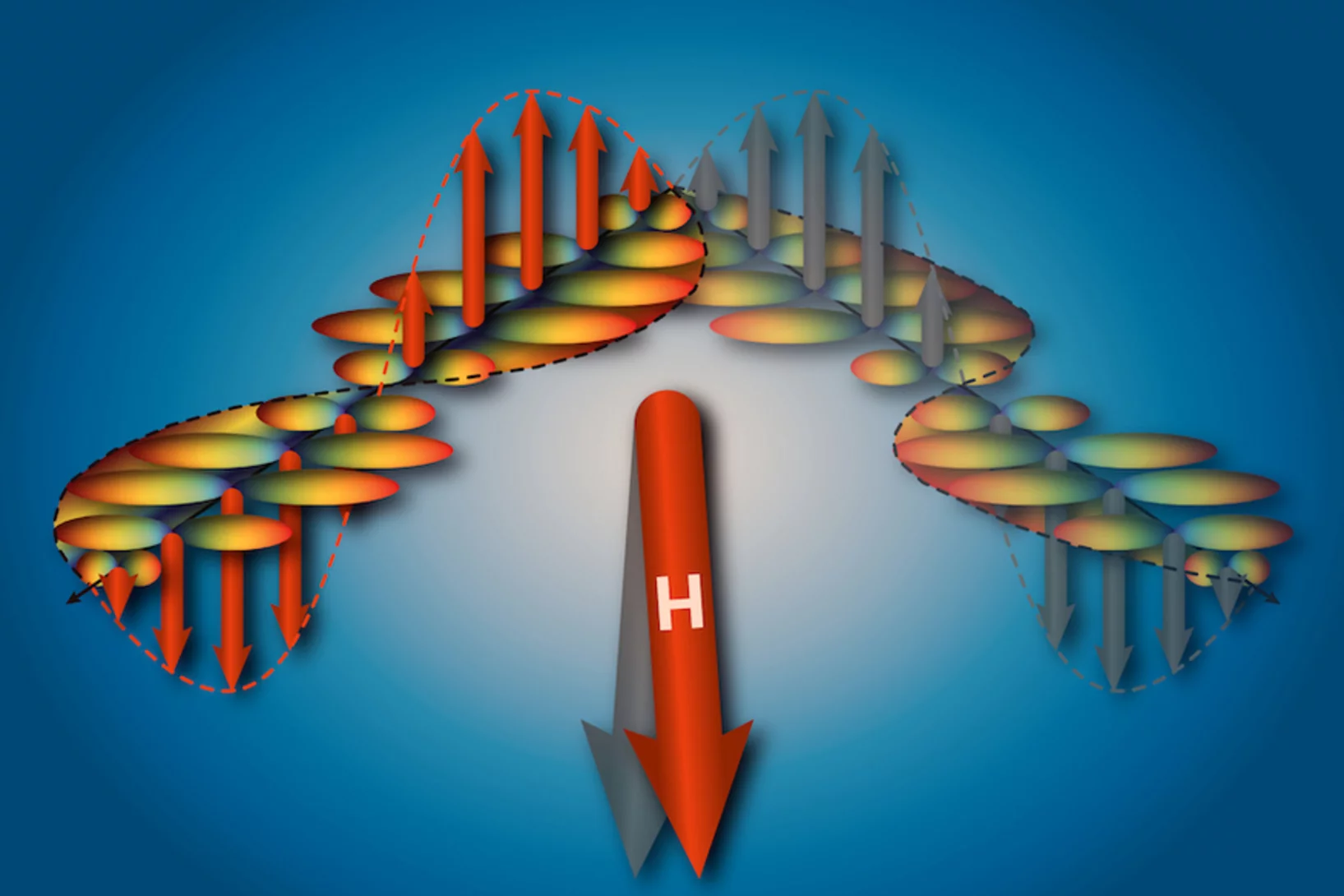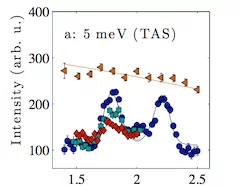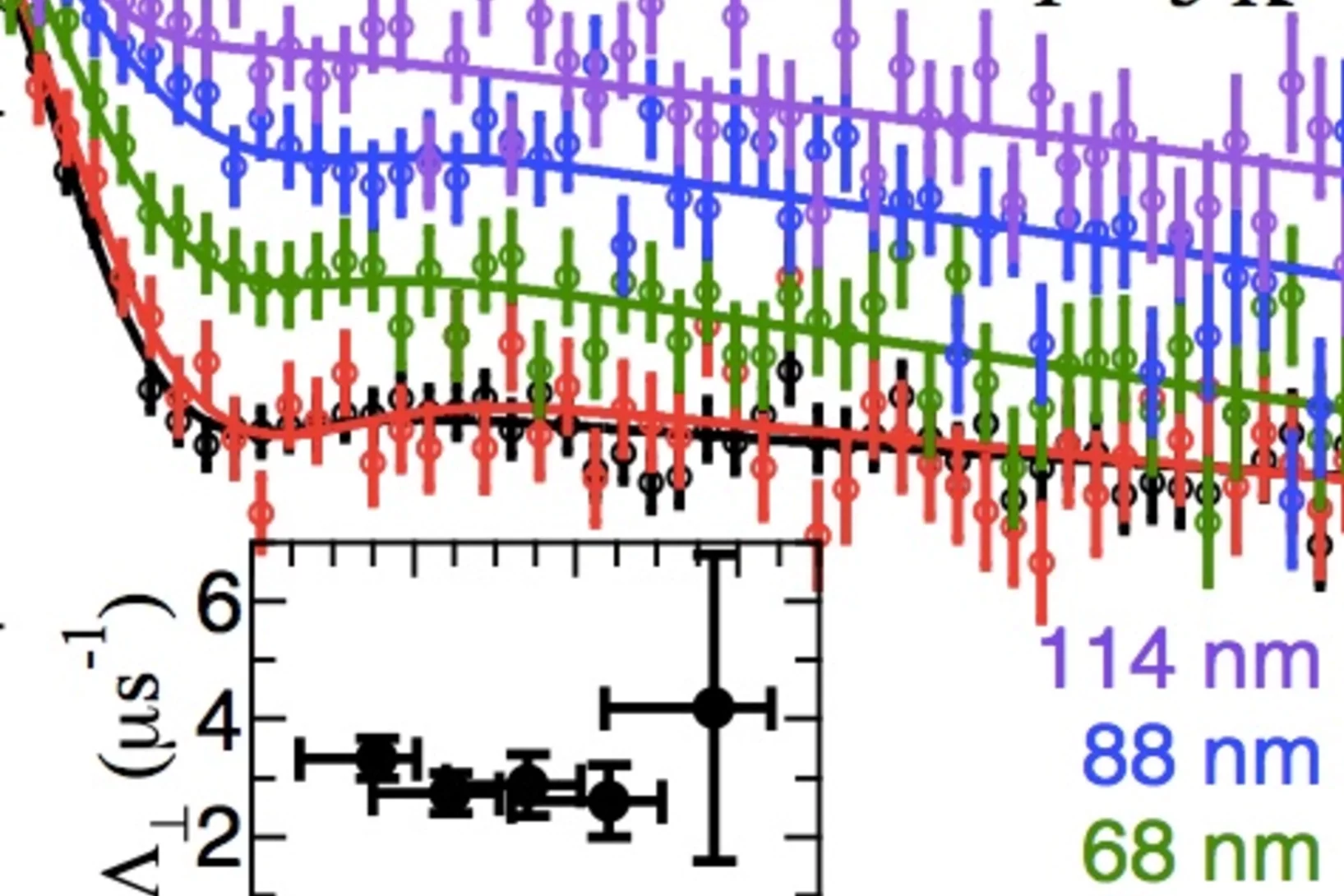Show filters
Frustration-induced nanometre-scale inhomogeneity in a triangular antiferromagnet
Phase inhomogeneity of otherwise chemically homogenous electronic systems is an essential ingredient leading to fascinating functional properties, such as high-Tc superconductivity in cuprates, colossal magnetoresistance in manganites and giant electrostriction in relaxors. In these materials distinct phases compete and can coexist owing to intertwined ordered parameters. Charge degrees of freedom play a fundamental role, although phase-separated ground states have been envisioned theoretically also for pure spin systems with geometrical frustration that serves as a source of phase competition.
Switching of magnetic domains reveals spatially inhomogeneous superconductivity
The interplay of magnetic and charge fluctuations can lead to quantum phases with exceptional electronic properties. A case in point is magnetically-driven superconductivity, where magnetic correlations fundamentally affect the underlying symmetry and generate new physical properties. The superconducting wavefunction in most known magnetic superconductors does not break translational symmetry.
Magnetoelastic Excitations in the Pyrochlore Spin Liquid Tb2Ti2O7
Tb2Ti2O7 is often referred to as a spin liquid as it does indeed remain in a magnetically disordered phase with spin dynamics down to 0.05 K, but this itself is a surprise since there are strong expectations of magnetic order and/or a structural distortion. However, throughout the spin liquid regime there are also strong signs of magnetoelastic coupling, leading to the suggestion that both spin and structural degrees of freedom are frustrated.
Bulk superconductivity in undoped T'-La1.9Y0.1CuO4 probed by muon spin rotation
The Meissner effect has been directly demonstrated by depth-resolved muon spin rotation measurements in high-quality thin films of the T'-structured cup rate, T'-La1.9Y0.1CuO4, to confirm bulk superconductivity (Tc ≈ 21 K) in its undoped state. The gradual expelling of an external magnetic field is observed over a depth range of ∼ 100 nm in films with a thickness of 275(15) nm, from which the penetration depth is deduced to be 466(22) nm. Based on this result, we argue that the true ground state of the “parent” compound of the n-type cuprates is not a Mott insulator but a strongly correlated metal with colossal sensitivity to apical oxygen impurities.



